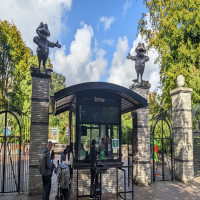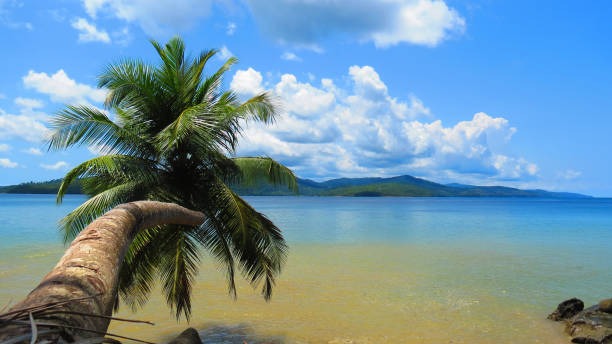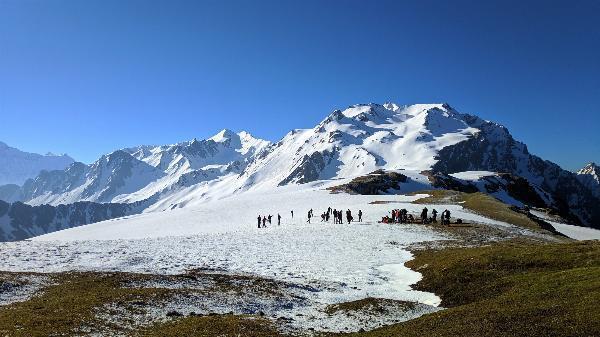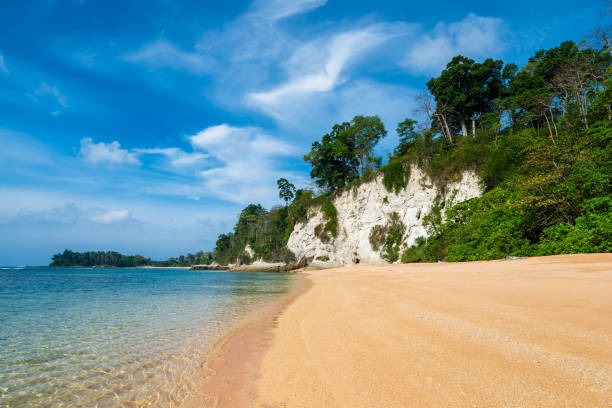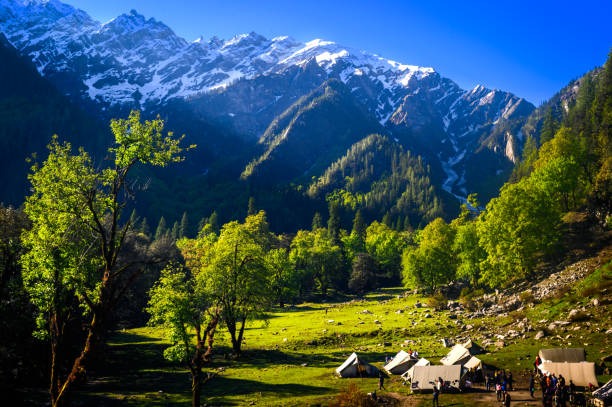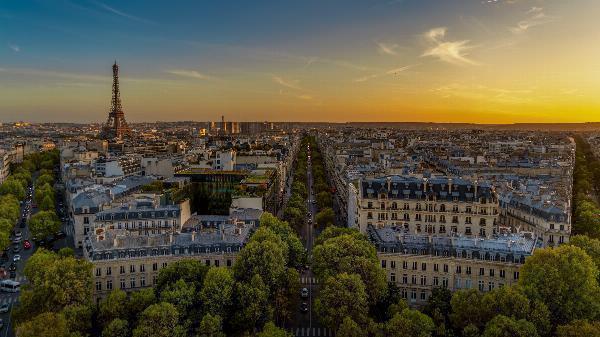Journey Through Japan: A Traveler's Dream
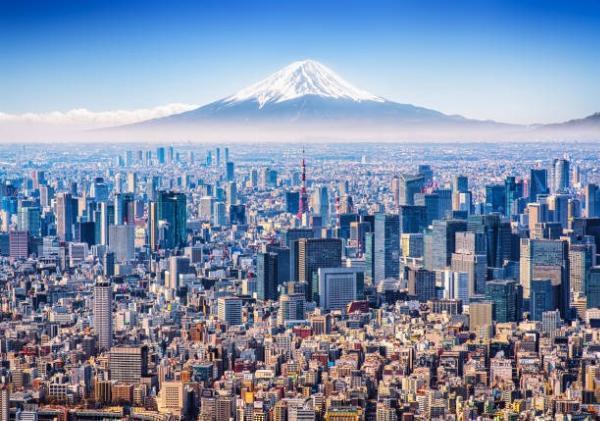
Japan is a country that effortlessly blends ancient traditions with modern innovation. It is a land where futuristic skyscrapers sit alongside centuries-old temples, where bustling cities give way to serene landscapes, and where the past and present coexist in perfect harmony. For travelers, Japan is nothing short of a dream—a place where every corner holds a new discovery, every dish a new flavor, and every experience a new memory. In this blog, we will embark on a journey through Japan, exploring its most iconic destinations and uncovering the hidden gems that make this country so unique. Whether you're planning a quick visit or an extended stay, this guide will inspire your next adventure in the Land of the Rising Sun. If you’re considering an extended stay, the 6 Days Japan Tour Packages offer a perfect mix of culture, history, and natural beauty.
1. Tokyo: The City That Never Sleeps
A Modern Metropolis with Ancient Roots
Tokyo, Japan’s bustling capital, is often the first stop for travelers. This sprawling metropolis is a city of contrasts, where ultra-modern architecture and technology meet ancient temples and traditional tea houses. Tokyo is a city that never sleeps, offering something for everyone, whether you're a foodie, a history buff, a fashion enthusiast, or an adventure seeker.
Must-Visit Sites
Shibuya Crossing: Known as the world’s busiest pedestrian crossing, Shibuya Crossing is a symbol of Tokyo’s vibrant energy. Watching the crowds cross in every direction is a sight to behold, especially at night when the neon lights of the surrounding buildings illuminate the scene.
Meiji Shrine: Located in a forested area in the heart of Tokyo, the Meiji Shrine is dedicated to Emperor Meiji and Empress Shoken. The shrine offers a peaceful retreat from the hustle and bustle of the city, and its traditional Shinto architecture provides a stark contrast to the modern cityscape.
Tokyo Tower: Inspired by Paris’s Eiffel Tower, Tokyo Tower is a beloved landmark that offers stunning views of the city. For the best experience, visit at sunset when the city lights begin to twinkle.
Cultural Experiences
Tokyo is not just about sightseeing; it’s a city where you can immerse yourself in Japanese culture. Participate in a traditional tea ceremony, try your hand at making sushi, or explore the city's many art galleries and museums. For a truly unique experience, visit one of Tokyo’s many themed cafes, where you can dine with cats, owls, or even robots.
Insider Tips
Best Time to Visit: Tokyo is a year-round destination, but the city is particularly beautiful in the spring when the cherry blossoms are in bloom. Autumn is also a great time to visit, as the city’s parks and gardens are ablaze with fall colors.
Getting Around: Tokyo’s public transportation system is one of the best in the world. The subway is the most efficient way to get around, but be prepared for crowds, especially during rush hour.
2. Kyoto: The Cultural Heart of Japan
A City Steeped in History
Kyoto, with its rich history and well-preserved architecture, is often referred to as the cultural heart of Japan. Once the imperial capital, Kyoto is home to over 1,000 temples, 17 UNESCO World Heritage sites, and some of the country’s most famous gardens. Kyoto offers a journey back in time, where you can experience the traditional side of Japan.
Must-Visit Sites
Fushimi Inari Shrine: Famous for its thousands of red torii gates that form a pathway up Mount Inari, Fushimi Inari Shrine is one of Kyoto’s most iconic sites. The hike through the gates offers stunning views and a peaceful retreat from the city.
Kinkaku-ji (Golden Pavilion): This Zen Buddhist temple is one of Kyoto’s most visited attractions. The temple’s top two floors are covered in gold leaf, and it sits beside a tranquil pond that reflects the building’s golden image. Visiting Kinkaku-ji during the autumn season, when the surrounding trees turn red and gold, is particularly magical.
Arashiyama Bamboo Grove: Walking through the towering bamboo stalks of the Arashiyama Bamboo Grove is an otherworldly experience. The bamboo forest is located in the Arashiyama district, which is also home to beautiful temples and the scenic Togetsukyo Bridge.
Cultural Experiences
Kyoto is the perfect place to experience traditional Japanese culture. Attend a tea ceremony, dress in a kimono, or take part in a Zen meditation session at one of the city’s many temples. Kyoto’s geisha culture is also something not to be missed. Visit the Gion district to catch a glimpse of geishas and maikos (apprentice geishas) as they make their way to evening appointments.
Insider Tips
Seasonal Beauty: Kyoto is a city of four seasons. Visit in spring to see the cherry blossoms, in summer to experience traditional festivals, in autumn for the vibrant fall foliage, and in winter to enjoy the peaceful snow-covered temples.
Explore by Foot: Many of Kyoto’s most famous sites are within walking distance of each other. Take your time to stroll through the city’s historic districts and discover hidden gems along the way.
3. Hiroshima and Miyajima: A Journey of Reflection
A City of Peace
Hiroshima is a city that has risen from the ashes of its tragic past to become a symbol of peace and resilience. While the city is forever linked to the events of August 6, 1945, it is also a vibrant, modern city with much to offer visitors. Nearby Miyajima Island, with its famous floating torii gate, is one of Japan’s most scenic spots.
Must-Visit Sites
Hiroshima Peace Memorial Park: This park is dedicated to the victims of the atomic bombing and serves as a powerful reminder of the horrors of war. The park includes several monuments, the most famous of which is the A-Bomb Dome, a UNESCO World Heritage site. The Hiroshima Peace Memorial Museum is also located in the park and provides a comprehensive and moving account of the bombing and its aftermath.
Miyajima Island: Just a short ferry ride from Hiroshima, Miyajima Island is home to the Itsukushima Shrine and its iconic floating torii gate. The shrine is built over the water, and at high tide, it appears to be floating on the sea. The island itself is also a great place to explore, with hiking trails, wildlife (including friendly deer), and beautiful beaches.
Shukkeien Garden: This traditional Japanese garden in Hiroshima is a peaceful oasis in the city. The garden features a central pond surrounded by walking paths, bridges, and tea houses. It’s a great place to relax and reflect after visiting the Peace Memorial Park.
Cultural Experiences
Hiroshima is a city of reflection, and visiting the Peace Memorial Park and Museum is a deeply moving experience. On Miyajima Island, you can enjoy more lighthearted cultural activities, such as trying local delicacies like momiji manju (maple leaf-shaped cakes filled with sweet bean paste) and exploring traditional crafts in the island’s many shops.
Insider Tips
Best Time to Visit: The floating torii gate on Miyajima Island is most photogenic at high tide when it appears to float on the water. Check the tide schedule before you visit to ensure you see this iconic sight at its best.
Getting Around: Hiroshima is a compact city, and many of its main attractions are within walking distance of each other. The city also has an excellent tram system that makes it easy to get around.
4. Mount Fuji: Japan’s Sacred Mountain
A Symbol of Japan
Mount Fuji is Japan’s highest mountain and one of the country’s most iconic symbols. This nearly perfectly symmetrical volcano has inspired countless artists, poets, and pilgrims throughout the centuries. Whether you’re an experienced climber or simply wish to admire its beauty from afar, Mount Fuji is a must-visit destination.
Must-Visit Sites
Fuji Five Lakes: The Fuji Five Lakes region, located at the northern base of Mount Fuji, offers some of the best views of the mountain. Each lake—Kawaguchi, Yamanaka, Sai, Shoji, and Motosu—provides a different perspective of Mount Fuji, and the area is ideal for hiking, boating, and relaxing in hot springs.
Chureito Pagoda: Located in the Arakura Sengen Shrine, the Chureito Pagoda offers one of the most iconic views of Mount Fuji. The pagoda, with the mountain in the background, is especially beautiful during cherry blossom season and in the autumn when the surrounding trees are ablaze with color.
Hakone: A popular resort town near Mount Fuji, Hakone offers a mix of traditional hot springs, art museums, and scenic boat rides. The Hakone Ropeway provides stunning panoramic views of Mount Fuji and the surrounding landscape.
Cultural Experiences
Climbing Mount Fuji is considered a pilgrimage for many Japanese people, and the experience is as much spiritual as it is physical. If climbing to the summit is not for you, there are plenty of other ways to experience the mountain’s beauty and cultural significance. Participate in a meditation session at a local temple, visit the Fuji Sengen Shrine, or simply enjoy the mountain’s presence from one of the many scenic viewpoints.
Insider Tips
Climbing Season: The official climbing season for Mount Fuji is from early July to early September. If you plan to climb, be sure to start early in the morning to avoid the crowds and the afternoon thunderstorms that
Note: IndiBlogHub features both user-submitted and editorial content. We do not verify third-party contributions. Read our Disclaimer and Privacy Policyfor details.

